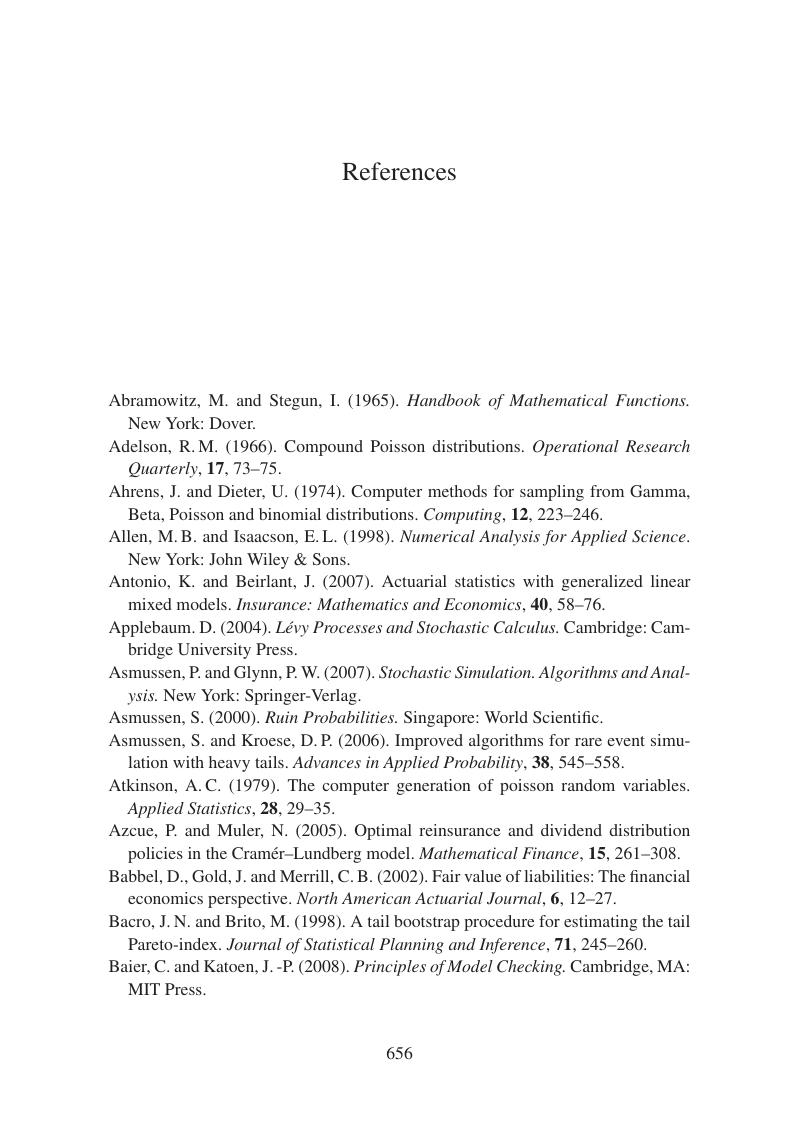Book contents
- Frontmatter
- Contents
- Preface
- 1 Introduction
- PART I TOOLS FOR RISK ANALYSIS
- PART II GENERAL INSURANCE
- PART III LIFE INSURANCE AND FINANCIAL RISK
- Appendix A Random variables: Principal tools
- Appendix B Linear algebra and stochastic vectors
- Appendix C Numerical algorithms: A third tool
- References
- Index
- References
References
Published online by Cambridge University Press: 05 May 2014
- Frontmatter
- Contents
- Preface
- 1 Introduction
- PART I TOOLS FOR RISK ANALYSIS
- PART II GENERAL INSURANCE
- PART III LIFE INSURANCE AND FINANCIAL RISK
- Appendix A Random variables: Principal tools
- Appendix B Linear algebra and stochastic vectors
- Appendix C Numerical algorithms: A third tool
- References
- Index
- References
Summary

- Type
- Chapter
- Information
- Computation and Modelling in Insurance and Finance , pp. 656 - 679Publisher: Cambridge University PressPrint publication year: 2014



